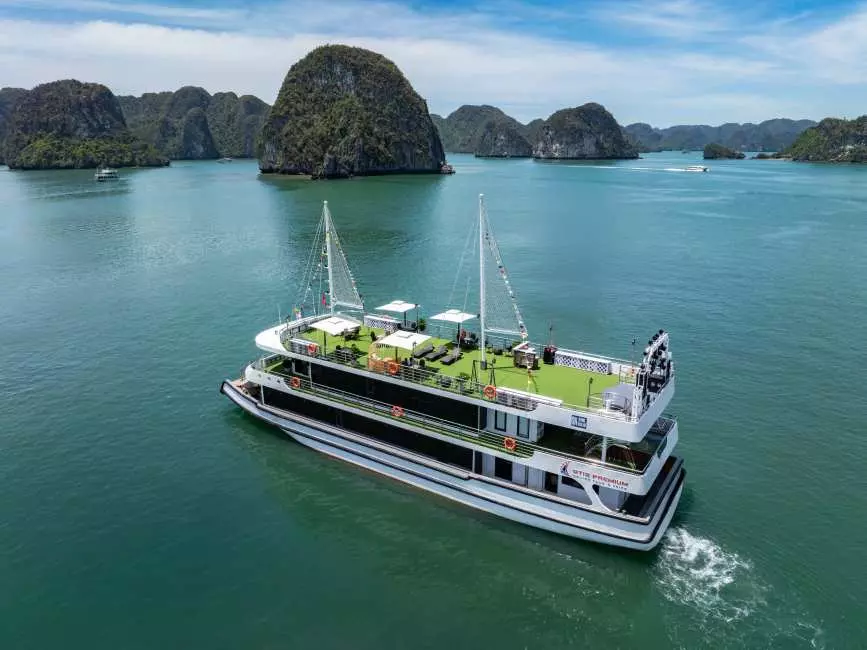Half an hour north of Cairns is The Daintree Rainforest
A road sign proclaims the place where the rainforest meets the reef; continue on and you’ll see it come true.
On the left, cloud-hugged mountains rise towards the otherwise blue sky; on the right, the teeming warm waters of the Great Barrier Reef lap a tidal beach.
The Great Barrier Reef Drive mimics the curve and jag of the coastline, except when it turns in towards aquaculture farms producing prawns and barramundi for the endless seafood platters of Port Douglas and beyond. Eighty per cent of the economy rests on tourism here, 20 per cent on agriculture and aquaculture – and here is where they meet.
Cross the famous Daintree River via the car ferry and a few things happen. The sand-yellow and aquatic blues you’d usually associate with Queensland make way for a deeper palette. This is a landscape of moody green, and crimson and fuchsia, and the million other shades that make up a rainforest. The forest thickens, phone coverage drops off, and the road grows extra curves.
You’ll also go officially off grid. Electricity ends at the river, so you’re in generator territory now. Night-time brings a spray of astronomical colour above, as the Milky Way greets you without interruption.
And you start to operate on a different scale. This ancient jungle coast, a 180-million-year-old remnant of Gondwana, is a land of the giants. Dinosaurs once roamed this area, and the plant life never forgot, growing fantastically large in this ever-lush rain-and-heat hothouse of a place.
However, among the mix of primary and dense secondary jungle (no thanks to the once-prolific logging that threatened this magic place), it’s essential to venture into the Daintree area with expert guidance and accompaniment, to get the most out of your experience. So here, we have three utterly enjoyable ways to really soak up the Daintree rainforest.
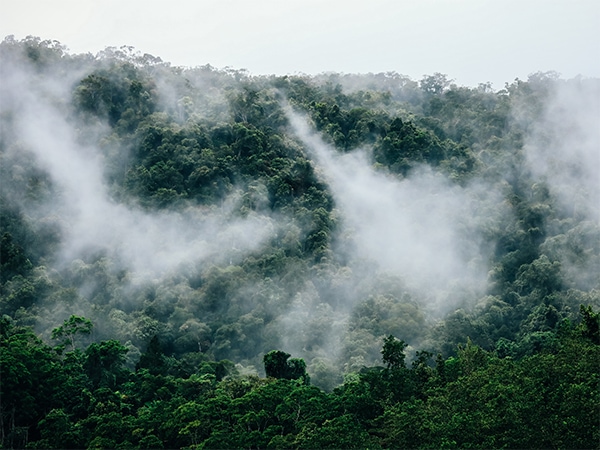
The world’s oldest rainforest comes alive – Elise Hassey
From the water
This is crocodile territory now, and an open-air wildlife cruise from the Daintree River Cruise Centre will have you intently studying every mangrove, every bump along the shoreline for the lazy gaze of a saltwater croc. There are 35 species of mangrove here, out of a possible 45 worldwide, and the place counts David Attenborough as a recent visitor.
On this more humble writer’s visit, the skipper – university educated in marine biology – cheerfully ran through the dense population of snakes, birds, reptiles, frogs and more inhabiting the incredible estuary, as well as the requisite tales of locals and tourists taken by crocodiles over the years.
It’s a tough life for a crocodile too, though.
Breeding season begins when the water starts to warm, around September, and by Christmas, female crocodiles can lay 50 to 60 eggs on the nursery area of Pig Island (so named because of the wild pigs that subsequently raid the place, hoping for eggs for breakfast). With the pigs swimming across along with wild dingoes and snakes, only 70 per cent of the eggs get to hatch, with only an estimated one per cent making it to maturity.
Winter (up until September) is the best time to spot crocodiles, since the cooler water means they must sunbathe more often for warmth. However, crocodile or no, there is plenty to see. Dolphins inhabit these waters alongside stingrays, giant gropers and a host of other marine life that uses this place as a nursery for the Great Barrier Reef.
Bull sharks – owners of the highest testosterone levels on the planet – also hunt for juvenile crocodiles in the river system, although they can get their comeuppance should they meet an adult croc.
The landscape is gnarled with jungle, and studded with mangrove snorkel roots. We see night herons and kettle egrets wading gracefully, then thrill at the first crocodile tracks marking the riverbank. That’s from Lizzy, nesting here for 18 seasons, we hear.
Then, despite the heat of the day, we find a good-sized crocodile laid along a muddy rise, eyeing us as we capture his best angle a thousand different ways from the boat with excited clicks and beeps. He seems uninterested in us, and it all feels quite safe.
“We don’t swim in the river, and they don’t come into the hotel and drink with us,” says our skipper Paul. “That seems to work, so we stick to that.”
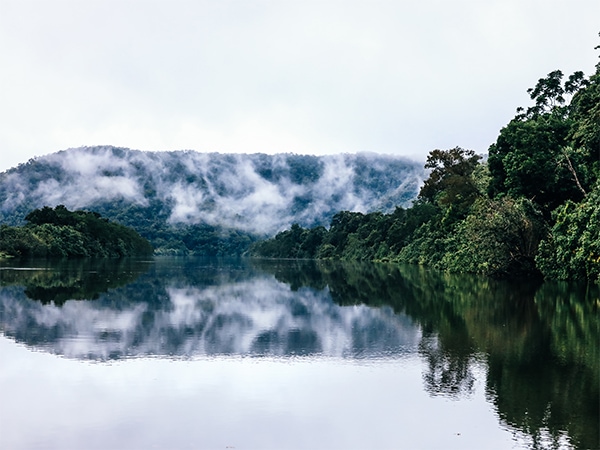
Reflecting on the Daintree River – Elise Hassey
From the land
The oldest tropical rainforest in the world seems a mite more manageable when approached via the Daintree Discovery Centre. Taking its prehistoric tangle and turning it into a visitable, digestible tourist experience is no mean feat, but this is rainforest neatly segmented and tamed into five self-guided tours.
Just as the cassowary corridor passes through the forest here, with these exotic and slightly terrifying giant birds lured along by bush fruit trees and an ever-running creek, so this feels like a kind of wildlife corridor made especially for humans to travel it – lured along by intelligent displays about wildlife or insect life, and walkways built to make sense of the wilderness.

The famous canopy walk
The entry fee sees you equipped with a cornucopia of information, from the comprehensive 68-page guidebook to a state-of-the-art audio guide that talks you through the bush-food trail, the cassowary circuit or the rather charming Jurassic Forest track, complete with animatronic dinosaurs. (The latter may seem a trifle tacky, but anything that brings the kids through something as complex as a primordial rainforest is OK by us.)
A 125-metre metal aerial walkway keeps things easy, and the climb to the 23-metre-high observation tower tests your aerobic fitness in the face of high humidity, but the views are more than worth the rapid heartbeat.
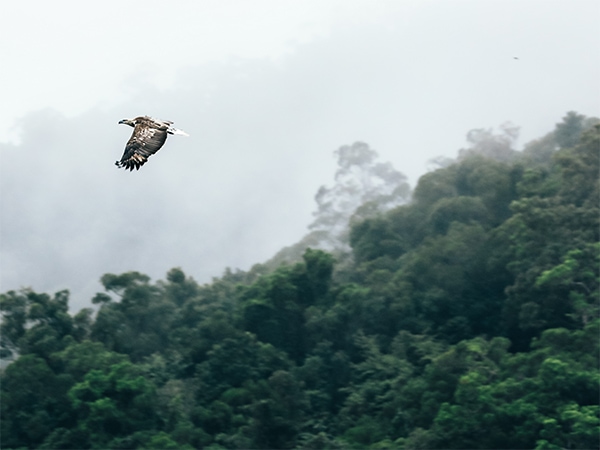
Look up in the Daintree – Elise Hassey
From the air
Should you require a loftier experience – in every sense of the word – you can always get fancy with a heli-tour. Departing from Cairns for a 3.5-hour flight all up, it’s also a good fit for those who prefer to spend money rather than time.
The 40-minute Nautilus Aviation scenic flight up to the Daintree tracks along the coast over the rarefied enclaves of Port Douglas and Palm Cove, then you have a hawk’s-eye view of that incredible stretch of coast where the rainforest meets the reef: deepest emerald and giant fern trees on your left, clearest aqua waters and deserted mini-islands to your right.
There is something magic about seeing the Daintree from directly above, especially in the areas of primary rainforest where you can clearly see the ground far below. The Wet Tropics area here is one of the most diverse in the world, in terms of wildlife, with animals you can’t see anywhere else in the world – so keeping your eyes open to spot a southern cassowary or a tree kangaroo makes this trip especially exciting.
A two-hour stop at Tranquillity Falls gives you time to bask in the spray of a private waterfall, and cool off in a postcard-pretty freshwater (crocodile-free) swimming hole. There’s a picnic lunch packed, topped off with sparkles, before the equally scenic flight home.
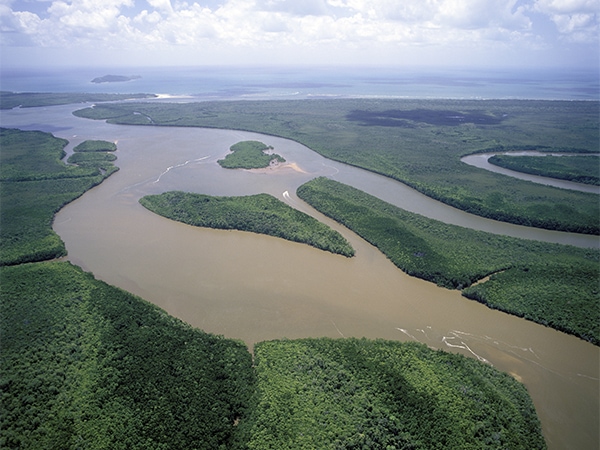
Bask in the glory from above
Where to stay
The Heritage Lodge, just out of Cape Tribulation, is well and truly off the grid – beautifully so. Dinner is pre-ordered but served with flair in the open air, considering the wilderness within arm’s reach; cute-as-anything bandicoots sometimes nose shyly around under the tables. You’ll need to blow out the decorative candles on the way to bed, if you stay up after the staff head home.
It’s not five star, but it’s thoughtful and cosy, with ruler-straight pressed linen. The rooms are entirely wildlife free, which is quite a feat in this place, since every square inch of the grounds is so patently alive. A simple swimming pool is outgunned by the nearby, much loved swimming hole in Cooper Creek. There are umbrellas provided to get around (after all, you can’t have a rainforest without rain), but the gigantic fan palms are as big as golf umbrellas, should you suddenly need shelter. It’s as far away from the city as it’s possible to get.
